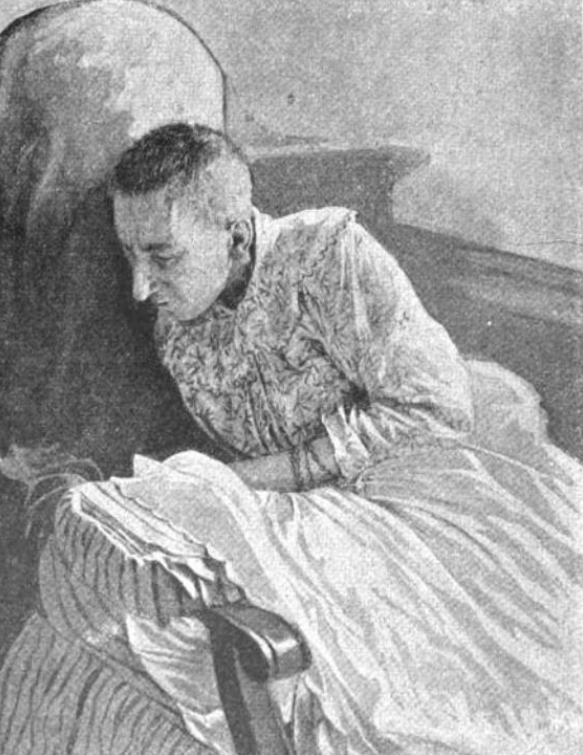Blanche Monnier: The girl who was locked away for 25 years
In 1901, a letter showed up at the Paris Attorney General’s office that no one could ignore. The writer revealed a shocking truth: Blanche Monnier, a woman from Poitiers, had been locked away in a small attic room for a staggering 25 years.
The letter painted a grim picture of Blanche’s condition — “half-starved, living on a putrid litter,” with everything around her covered in filth.
When the police arrived, they were met with a scene straight out of a horror story.
Born into a well-respected family
To fully grasp the shocking and tragic tale of Blanche Monnier do Marconnay, we need to rewind to 1870s France, a time marked by revolutions and drama.
Blanche, born in 1849, came from a well-respected, conservative bourgeois family
in the French city of Poitiers. The town is a historic place with proud traditions, famous for its Romanesque churches. Both Blanches parents, Charles and Louise Monnier, had deep roots in the society.

Her mother, Madame Louise Monnier, was known for her charitable works, even receiving a community award for her generous contributions. The family’s legacy was strong — Louise’s late husband had been in charge of a local arts faculty, and their son Marcel had become a law school graduate, working as an administrative official.
Marcel held his mother in high regard, while Blanche was a spirited, young woman who yearned to carve out her own path. With her thick, curly hair, big eyes, and vibrant personality, she was the picture of energy and independence, a stark contrast to the more traditional expectations placed on her by her family.
It was these very traits that would ultimately prove to be fatal for young Blanche. But in 1876, no one could have imagined what would happen to the popular socialite.
Vanished without a trace
That year, Blanche Monnier, drew the attention of many potential suitors. Described as “very gentle and good-natured,” she was widely regarded as a charming young woman, with her physical allure making her a sought-after match in society.
Given her family’s esteemed status, she was often in the public eye, and it seemed only a matter of time before she would find a suitable husband. But one day, she just disappeared.
At the time, Blanche was 26, still attending law school, and living at home — according to later news reports.
After a while, those close to Blanche began to wonder where she had gone. But they all received the same answer from her mother. Louise Monnier told people that her daughter had “gone away” or was traveling. Eventually, so much time had passed that many in the family and Blanche’s friends believed she had moved abroad. Since they never received any clear answers, people stopped asking about her.
No one had any idea that she was actually imprisoned in her own home, living under horrific conditions. It would take 25 years before anyone found her, and when she was finally discovered, an unimaginable story unfolded.
A mysterious note
On May 23, 1901, a mysterious, anonymous letter arrived at the office of the Paris Attorney General.
”Monsieur Attorney General, I have the honor to inform you of an exceptionally serious matter. A woman, a spinster, has been locked away in Madame Monnier’s house, half-starved and living in filth for the past twenty-five years,” the letter read.
When the police arrived at the Monnier villa to investigate, they were met with resistance. According to Crime Wire, Louise Monnier refused to let them in, even peeking her head out the window and ignoring their presence.
They then forced the door open and were hit by an overpowering stench. Heading upstairs, they discovered the source of the odor – a locked attic door, where the smell was the most intense.

After some struggle, the officers opened the door and managed to pry open a window that had been boarded up. Daylight finally filtered into the small room, revealing a grim scene. They forced their way into the attic, breaking down the padlocked door.
There, in the corner of the room, lay Blanche, now in her early 50s, emaciated and skeletal, squinting at the sunlight that barely reached her. Covered in old food, feces, and surrounded by bugs, she weighed barely 55 pounds. The conditions were horrifying, a stark contrast to the young woman she had once been.
One officer later recalled:
”As soon as light entered the room, we noticed, in the back, lying on a bed, her head and body covered by a repulsively filthy blanket, a woman identified as Mademoiselle Blanche Monnier. The unfortunate woman was lying completely naked on a rotten straw mattress. All around her was formed a sort of crust made from excrement, fragments of meat, vegetables, fish, and rotten bread. We also saw oyster shells and bugs running across Mademoiselle Monnier’s bed.”
Message on the filthy walls
According to an article in the New Zealand Times from 1901, during moments of clarity, Blanche had written on the filthy walls surrounding her: ”Shall I ever regain my freedom, or am I to be for ever consigned to this living tomb?”
The terrified woman was wrapped in a blanket and rushed to a hospital in Paris, where doctors initially feared she wouldn’t survive. She was severely malnourished, with matted hair that reached down to her knees.
As Blanche was carried out of the villa, her mother, Madame Monnier, then 75 years old, sat calmly at her desk in a beautiful black-and-white dress. She was immediately arrested and confessed to imprisoning her own daughter.
Reason for the imprisonment
According to Louise’s account, it all began one night in 1876 when Blanche quietly tiptoed up the stairs to her room, trying not to wake her mother and brother. What she didn’t know was that they were already awake and waiting for her upstairs.

